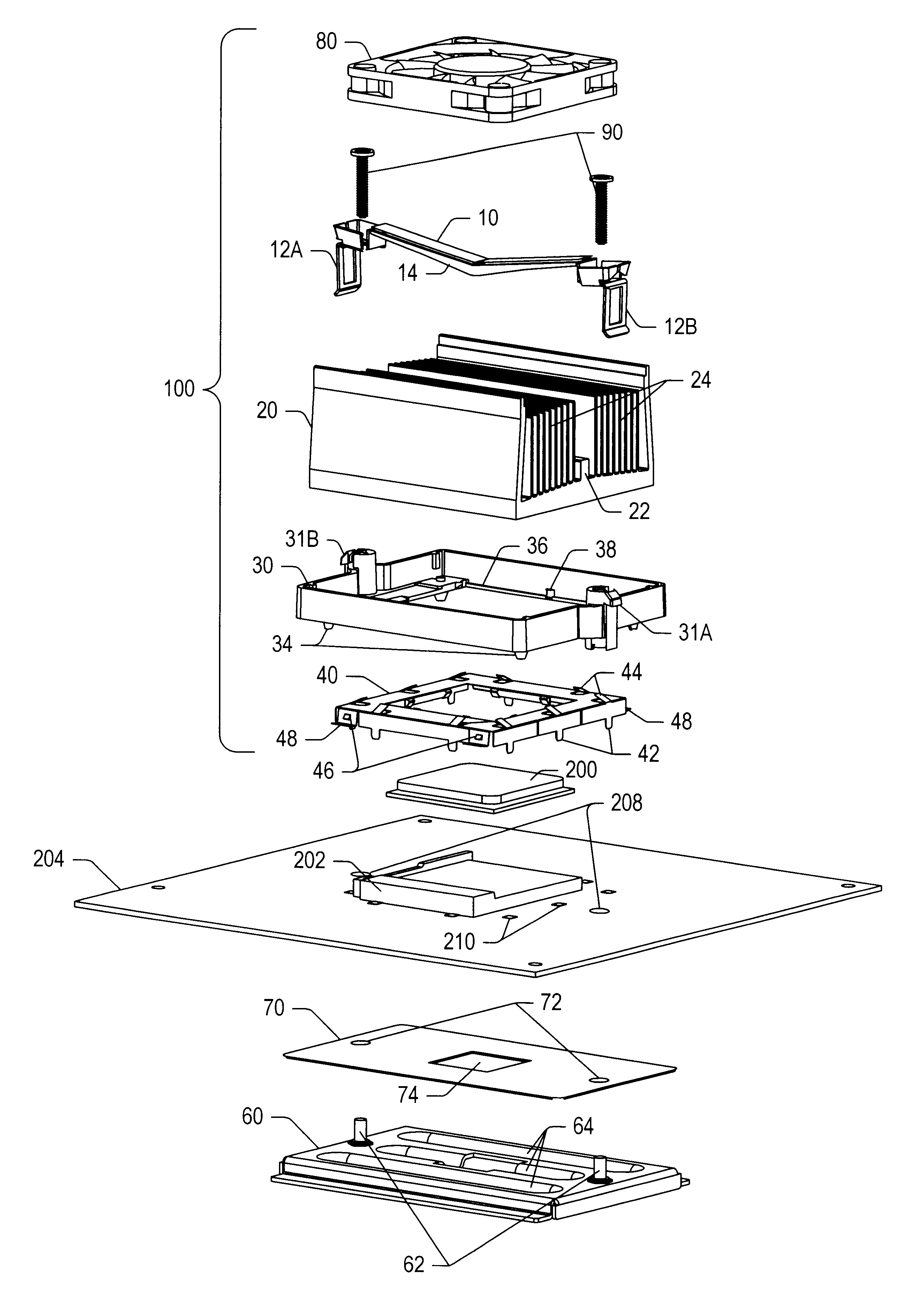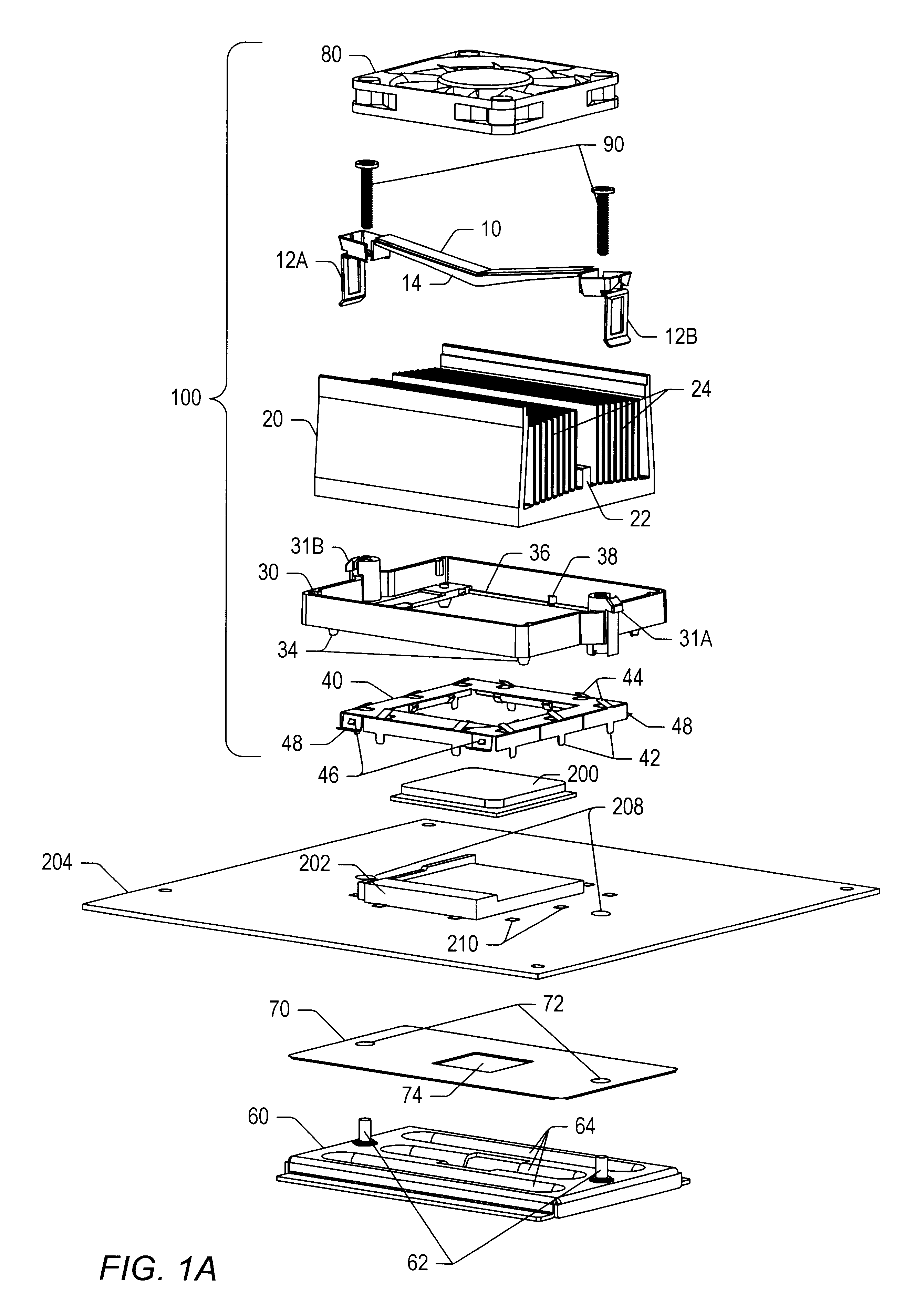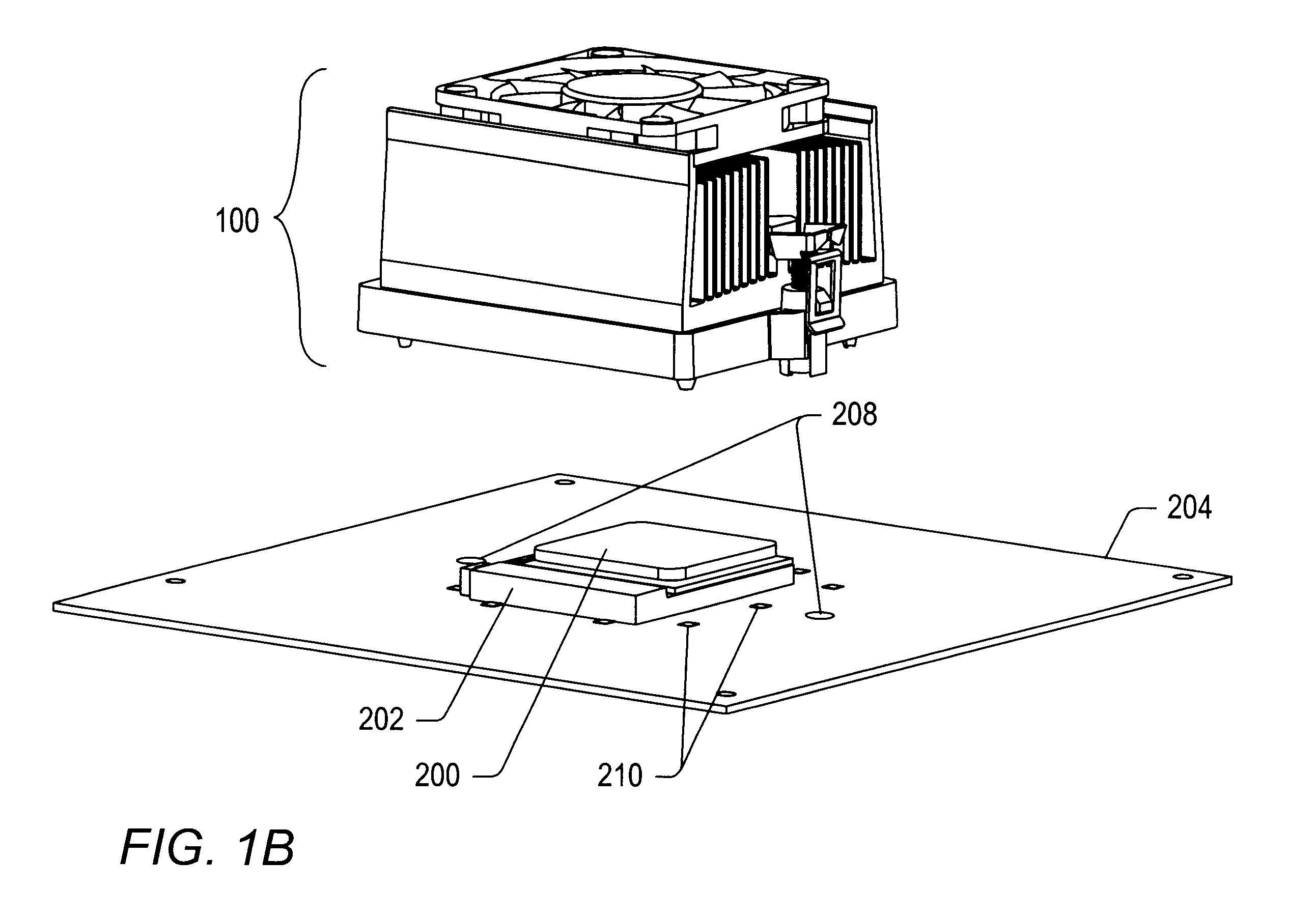Heat sink subassembly
a technology of heat sinks and sub-assemblies, applied in the field of computer systems, can solve problems such as system malfunction or error, electronic devices may generate heat, and electrical devices may be affected by the condition of the sub-assembly,
- Summary
- Abstract
- Description
- Claims
- Application Information
AI Technical Summary
Problems solved by technology
Method used
Image
Examples
Embodiment Construction
FIG. 1A shows an exploded perspective view of one embodiment of a computer system that includes a heat sink subassembly 100, an integrated circuit 200, a printed circuit board 204, an insulator 70, and a stiffening plate 60. As shown, heat sink subassembly may include a fan 80, a spring clip 10, two screws 90, a heat sink 20, a retainer 30, and electromagnetic shielding 40. In alternative embodiments, several of the components (e.g., screws 90, fan 80, and / or electromagnetic shielding 40) shown in FIG. 1A may not be included in a subassembly sold by a heat sink manufacturer. Note that as described herein, individual components labeled by the same reference number followed by a distinct alphabetic identifier (e.g., tangs 12A and 12B) may be collectively referred to by that number alone (e.g., tangs 12). Also, note that when descriptions refer to a directional orientation of a component (e.g., above or below another component, or having an upper or lower surface), the directional orie...
PUM
 Login to View More
Login to View More Abstract
Description
Claims
Application Information
 Login to View More
Login to View More - R&D
- Intellectual Property
- Life Sciences
- Materials
- Tech Scout
- Unparalleled Data Quality
- Higher Quality Content
- 60% Fewer Hallucinations
Browse by: Latest US Patents, China's latest patents, Technical Efficacy Thesaurus, Application Domain, Technology Topic, Popular Technical Reports.
© 2025 PatSnap. All rights reserved.Legal|Privacy policy|Modern Slavery Act Transparency Statement|Sitemap|About US| Contact US: help@patsnap.com



